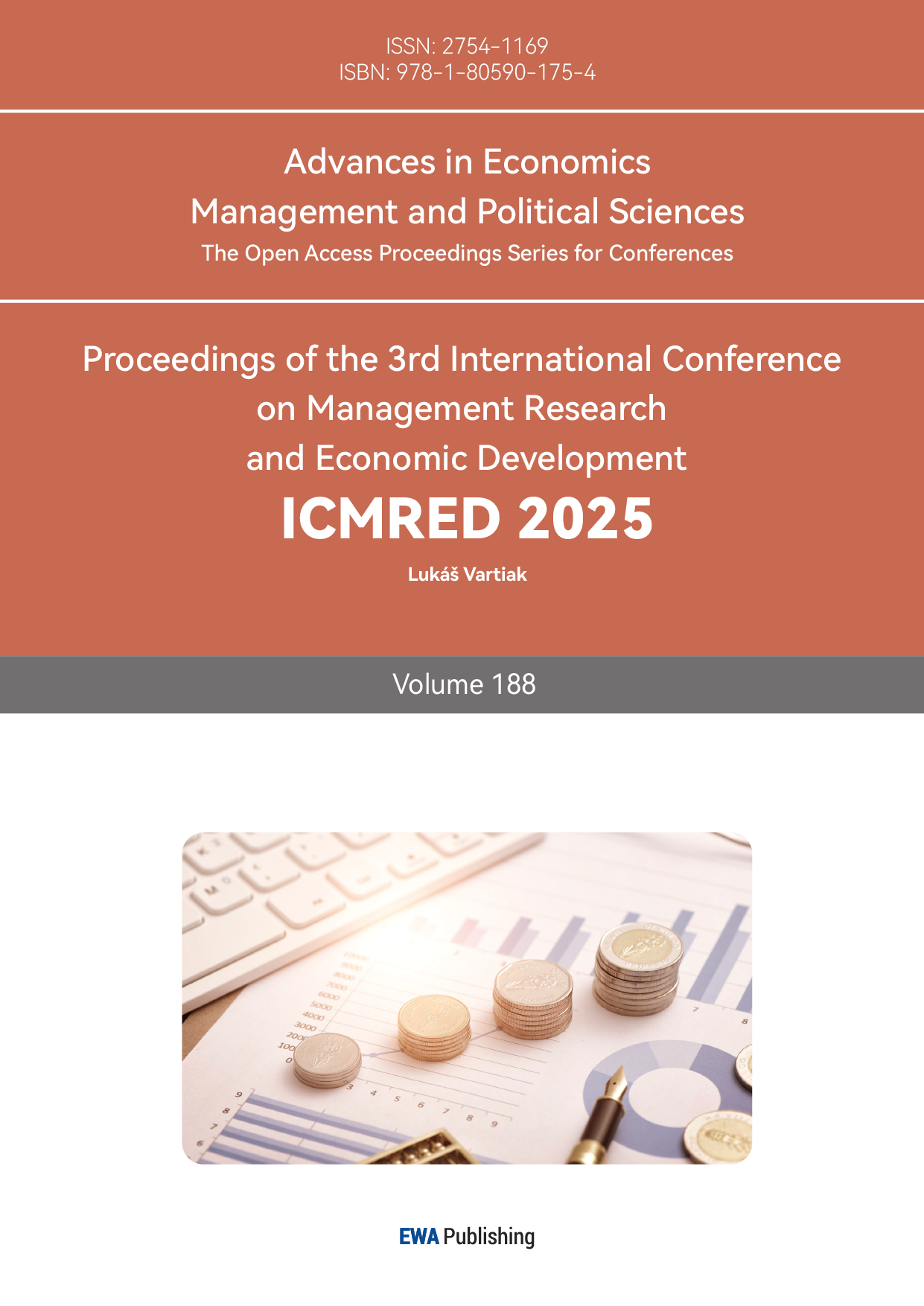References
[1]. Markowitz, H. M. (1952). Portfolio selection. The Journal of Finance, 7(1), 77-91.
[2]. Sharpe, W. F. (1964). Capital asset prices: a theory of market equilibrium under conditions of risk. The Journal of Finance, 19(3), 425-442.
[3]. Fama, E. F., & French, K. R. (1993). Common risk factors in the returns on stocks and bonds. Journal of Financial Economics, 33(1), 3-56.
[4]. Markowitz, H. M. (1959). Portfolio selection: efficient diversification of investments. John Wiley & Sons.
[5]. Markowitz, H. M. (1991). Foundations of portfolio theory. The Journal of Finance, 46(2), 469-477.
[6]. Carhart, M. M. (1997). On persistence in mutual fund performance. The Journal of Finance, 52(1), 57-82.
[7]. Fama, E. F., & French, K. R. (2015). A five-factor asset pricing model. journal of financial economics, 116(1), 1-22.
[8]. Fama, E. F., & French, K. R. (1996). Multifactor explanations of asset pricing anomalies. the Journal of Finance, 51(1), 55-84.
[9]. Fama, E. F., & French, K. R. (1998). Value versus growth: The international evidence. The Journal of Finance, 53(6), 1975-1999.
[10]. Jensen, M. C. (1968). The performance of mutual funds in the period 1945-1964. The Journal of Finance, 23(2), 389-416.
[11]. Roll, R. (1977). A critique of the asset pricing theory's tests Part I: On past and potential testability of the theory. Journal of Financial Economics, 4(2), 129-176.
[12]. Black, F., Jensen, M. C., & Scholes, M. (1972). The capital asset pricing model: some empirical tests. Studies in the Theory of Capital Markets, 81(3), 79-121.
[13]. Fama, E. F., & MacBeth, J. D. (1973). Risk, return, and equilibrium: Empirical tests. Journal of Political Economy, 81(3), 607-636.
[14]. Merton, R. C. (1973). An intertemporal capital asset pricing model. Econometrica, 41(5), 867-887.
Cite this article
Zhang,Y. (2025). A Comparative Study of Markowitz, CAPM and Fama-French Models in Portfolio Return Forecasting. Advances in Economics, Management and Political Sciences,188,15-20.
Data availability
The datasets used and/or analyzed during the current study will be available from the authors upon reasonable request.
Disclaimer/Publisher's Note
The statements, opinions and data contained in all publications are solely those of the individual author(s) and contributor(s) and not of EWA Publishing and/or the editor(s). EWA Publishing and/or the editor(s) disclaim responsibility for any injury to people or property resulting from any ideas, methods, instructions or products referred to in the content.
About volume
Volume title: Proceedings of the 3rd International Conference on Management Research and Economic Development
© 2024 by the author(s). Licensee EWA Publishing, Oxford, UK. This article is an open access article distributed under the terms and
conditions of the Creative Commons Attribution (CC BY) license. Authors who
publish this series agree to the following terms:
1. Authors retain copyright and grant the series right of first publication with the work simultaneously licensed under a Creative Commons
Attribution License that allows others to share the work with an acknowledgment of the work's authorship and initial publication in this
series.
2. Authors are able to enter into separate, additional contractual arrangements for the non-exclusive distribution of the series's published
version of the work (e.g., post it to an institutional repository or publish it in a book), with an acknowledgment of its initial
publication in this series.
3. Authors are permitted and encouraged to post their work online (e.g., in institutional repositories or on their website) prior to and
during the submission process, as it can lead to productive exchanges, as well as earlier and greater citation of published work (See
Open access policy for details).
References
[1]. Markowitz, H. M. (1952). Portfolio selection. The Journal of Finance, 7(1), 77-91.
[2]. Sharpe, W. F. (1964). Capital asset prices: a theory of market equilibrium under conditions of risk. The Journal of Finance, 19(3), 425-442.
[3]. Fama, E. F., & French, K. R. (1993). Common risk factors in the returns on stocks and bonds. Journal of Financial Economics, 33(1), 3-56.
[4]. Markowitz, H. M. (1959). Portfolio selection: efficient diversification of investments. John Wiley & Sons.
[5]. Markowitz, H. M. (1991). Foundations of portfolio theory. The Journal of Finance, 46(2), 469-477.
[6]. Carhart, M. M. (1997). On persistence in mutual fund performance. The Journal of Finance, 52(1), 57-82.
[7]. Fama, E. F., & French, K. R. (2015). A five-factor asset pricing model. journal of financial economics, 116(1), 1-22.
[8]. Fama, E. F., & French, K. R. (1996). Multifactor explanations of asset pricing anomalies. the Journal of Finance, 51(1), 55-84.
[9]. Fama, E. F., & French, K. R. (1998). Value versus growth: The international evidence. The Journal of Finance, 53(6), 1975-1999.
[10]. Jensen, M. C. (1968). The performance of mutual funds in the period 1945-1964. The Journal of Finance, 23(2), 389-416.
[11]. Roll, R. (1977). A critique of the asset pricing theory's tests Part I: On past and potential testability of the theory. Journal of Financial Economics, 4(2), 129-176.
[12]. Black, F., Jensen, M. C., & Scholes, M. (1972). The capital asset pricing model: some empirical tests. Studies in the Theory of Capital Markets, 81(3), 79-121.
[13]. Fama, E. F., & MacBeth, J. D. (1973). Risk, return, and equilibrium: Empirical tests. Journal of Political Economy, 81(3), 607-636.
[14]. Merton, R. C. (1973). An intertemporal capital asset pricing model. Econometrica, 41(5), 867-887.









